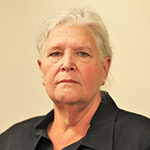Project NOW to host memorial service Friday
QCBJ News Staff
A recession may be looming in 2023, but if it does happen, it may not be as severe as the previous historic ones the Quad Cities region and the nation have weathered.
That was one of the silver linings mixed in with often gloomy data and challenges shared with Quad Cities business leaders on Thursday, Dec. 1, by Kevin Depew, deputy chief economist and Industry Eminence…

Get immediate, unlimited access to all subscriber content and much more.
Learn more in our subscriber FAQ.
Do you want to read and share this article without a paywall?
